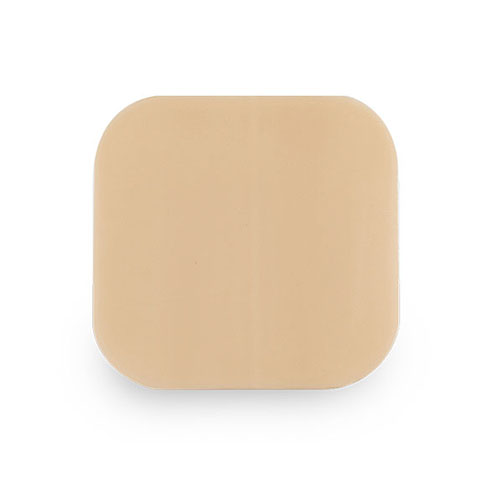News Categories
Unlike traditional dressings, modern wound dressings play a more active role in healing. A deeper understanding and appreciation of wound healing physiology has led to the development of innovative wound care techniques. With the wide variety of dressings on the market, choosing the most appropriate wound dressing can be difficult. Wound care specialists and podiatrists need to be aware of the different dressing types to select the most appropriate. Foam dressings are one of several wound dressing materials currently available.

1. What is a Foam dressing?
Foam dressings are composed of polyurethane or silicone materials. They usually have two layers: an inner hydrophilic layer that rests on the wound and a hydrophobic outer layer that prevents leakage. Foam dressings can be either adhesive or non-adhesive. Non-adhesive Foam dressings require an additional secondary dressing to hold them in place. Typically, thin Foam dressings have an adhesive wrap-around contact layer. On the other hand, thick Foam dressings may or may not have an adhesive layer.
Foam dressings are available in various shapes, sizes, and thicknesses. Some available forms include wafers, rolls, and shapes that conform to different anatomical positions. They can also be used as cavity dressings. Foam dressings are permeable to water, and their hydrophilic nature makes them highly absorbent. Foam dressings are, therefore, suitable for wounds with moderate to heavy exudates. Due to their excellent absorption capacity can also be used as secondary dressings to alginate and collagen primary dressings.
Foam dressings are non-occlusive and allow the loss of water vapor through the outer layer of the dressing. The moisture vapor transmission rate varies depending on the type of Foam dressing. The water vapor transmission rate can be altered by covering the dressing with a sock or support.
2. Benefits of Foam dressings.
Foam dressings were originally introduced as an alternative to hydrocolloid wound dressings. Wound care professionals and podiatrists widely use them because of their many benefits to wound healing. Although single-wound dressings do not have all the characteristics of an ideal wound dressing, Foam dressings fit well with the ideal dressing.
(1) Easy Removal. Foam dressings are among the easiest wound dressings to remove and protect the peri-wound skin from external trauma. Patients also report pain relief with Foam dressings.
(2) Moist wound healing. A moist wound microenvironment is a prerequisite for optimal wound healing. Foam dressings optimize moisture in the wound environment, thereby stimulating wound healing.
(3) Protection against bacterial attack. Foam dressings protect the wound bed from bacterial infection and external contamination.
(4) Adaptation. Foam dressings are easily adaptable, making them suitable for wounds in different anatomical locations. They can be cut according to the size of the wound. In addition, Foam dressings can be used to pack cavity wounds.
(5) Cost-effective. Foam dressings are economical and do not require frequent dressing changes. They can remain in place for up to 3 to 7 days.
(6) Non-toxic. Another advantage of Foam dressings is that they are non-toxic and hypoallergenic.
(7) High absorbency. Foam dressings have a very good absorption capacity, making them an excellent choice for moderate to heavy exudate wounds.
(8) Improved wound healing. A trial documenting the efficacy of film and Foam dressings found that wound healing was better in patients with Foam dressings.
3. Application of Foam dressings.
(1) Foam dressings are typically used for moderate to heavy exudate wounds. Some common applications of Foam dressings include
a) Partial and full wounds
b) Skin tears
c)Donation sites
d)compression packing
e)surgical wounds
f)Dermal wounds
g)granulated or necrotic wounds
h)Secondary dressing
i)Wound infection
(2) Foam dressings should be avoided in scorched and dry wounds as they can cause wound dryness. Some other important considerations to remember when using Foam dressings include
a) Not all Foam dressings are suitable for use on infected wounds. Therefore, please check the package label carefully before use.
b) To avoid maceration of the skin around the wound, skin protectors and wipes may be used.
c) Since conventional Foam dressings may not have an adhesive layer, they need to be secured with adhesive tape.
d) Clinical monitoring and evaluation of the wound bed may be challenging due to the opacity of the Foam dressing.
e) Certain antiseptics can damage foam wound dressings. Therefore, antiseptics should be used with caution.
The above is about the advantages and applications of Foam dressing. If you need more detailed information, welcome to contact us!
Changzhou Major Medical Products Co., Ltd. was established in June 2005, focusing on the field of medical supplies for 17 years. It is a high-tech enterprise that is quality-oriented, engaged in the research and development, production and sales of advanced medical dressings.